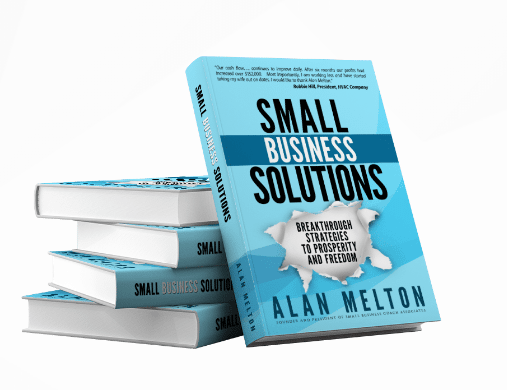VIEW BY TOPIC
- Finding Customers
- Business Systems
- Managing Employees
- Leadership
- Managing Money
Related Posts

Ready to Grow Your Business Fast?
Here’s How I Grew Five Businesses, and Eventually Sold One to a Fortune 500 Company.

5 Tips for Gathering Better Qualitative Data on Your Product
Qualitative research and gathering qualitative data – the collection, interpretation, and organization of data from customers or consumers – can be complicated.
There’s no one defined way to gather qualitative data. If you ask the wrong questions, you end up collecting useless data. So you need to make sure that you’re not just organized but also that you categorize your questions and the data you collect.
Here are a few tips and tricks for gathering better qualitative data about your product:
Use session recordings effectively
A business can gather qualitative data by recording product usage in real-time. Recording customer browsing and then watching these recorded sessions later helps businesses understand the behavior of their customers and see what they can do to improve the customers’ experience.
Session recording helps businesses understand the behavior of their customers and see what they can do to improve their (the customers’) experience. However, you need to know how to use product usage data for you to use session recordings effectively.
You should also record your customers’ journey from start to finish. This does not mean recording a single or few customers. The more data you gather, the easier it becomes to interpret.
Set a clear goal for your qualitative data

You can’t gather qualitative data without setting a goal for data collection. This goal should guide you and help you to differentiate between qualitative and quantitative data.
It’s challenging to come up with the right questions without a specific goal in mind. Setting a goal also makes it easy to understand what methods to use to gather product data.
Sample your audience
Define and sample your audience when you set your goal. The users you gather data from play a very important role in determining the success of your qualitative research.
You might randomly interview customers or choose a representative to interview, creating a customer persona and choosing one person to ask about your products.
Avoid Subjectivity
When gathering qualitative data about their products, most researchers subject values, assumptions, and histories to their research. This is a mistake that should be avoided at all costs.
If you want to gather better qualitative data, you should practice reflexivity. Reflexivity can be defined as the process by which researchers evaluate how they produce their findings, considering their role and prior knowledge about their products.
Consider Your Outcomes
You can get different outcomes when gathering qualitative data about your product. These outcomes are dictated by the type of research that you conduct. Some most common outcomes you might get include theories or conceptual models, taxonomies, measures of survey instruments, and recurrent hypotheses and themes, among others.
However, one of the best tricks when gathering qualitative data is understanding that the research is all about the meaning, not the numbers. It is supposed to provide you with a certain aspect of psychological and social life.
It is, therefore, important to understand that you will get different answers from your product data collection. You should not evaluate the data the same way you would any quantitative data. This is because even though you are telling your product story, the story might not be true but should be coherent and plausible.
Use the best data-gathering methods
There are different research methods you can use depending on your requirements and products. Choose a method that gets you the best results.
Some of the most common methods include direct observation, focus groups, and face-to-face interviews, among others. A method that works for another product might not work for yours.
However, no matter the method you choose to use, make sure that you will help your participants communicate their feelings and thoughts accurately. For instance, they should have interacted with the product you are asking them about for their answers to be accurate.
Do Not Use Your Best Customers

Every business has its best or favorite customers. These might be customers who are loyal to the business, who helped the business launch its products, or even those who have been paying for a product or service without problems.
These are the customers you need to avoid when gathering qualitative data about your product. This is because such customers will be biased. They will tell you exactly what you want to hear.
Instead, interview all your customers and ensure you have varied your sample. You should work towards collecting all data from all customers, not data from some of the best customers you have.
Eliminate bias
Everyone is biased, but you need to do your best to eliminate bias as you gather qualitative product data or you might ask the wrong questions.
To avoid bias, prepare a checklist or questionnaire before you start to collect data. This can help you practice reflexibility – the ability to evaluate yourself – so that you don’t influence the answers you get from users.
In addition, you must be careful about factors that might influence how you interpret the data you collect from participants. As a researcher, you have assumptions about your customers, so don’t let them affect your data interpretation.
Ensure Quality Responses
When gathering qualitative data, the response you get should be evaluated by quality, not quantity. Depending on your qualitative data collection methods, you might get responses from many participants. However, you should not focus on the participants but on the quality of their responses.
That notwithstanding, you might have to consider quantity with some surveys or polls. This is because factors such as response rate, sample size, confidence level, error margin, and population size can determine how valid your survey (data collection) is.
Collecting qualitative data is a complicated process, and these tips are just the start of it.














